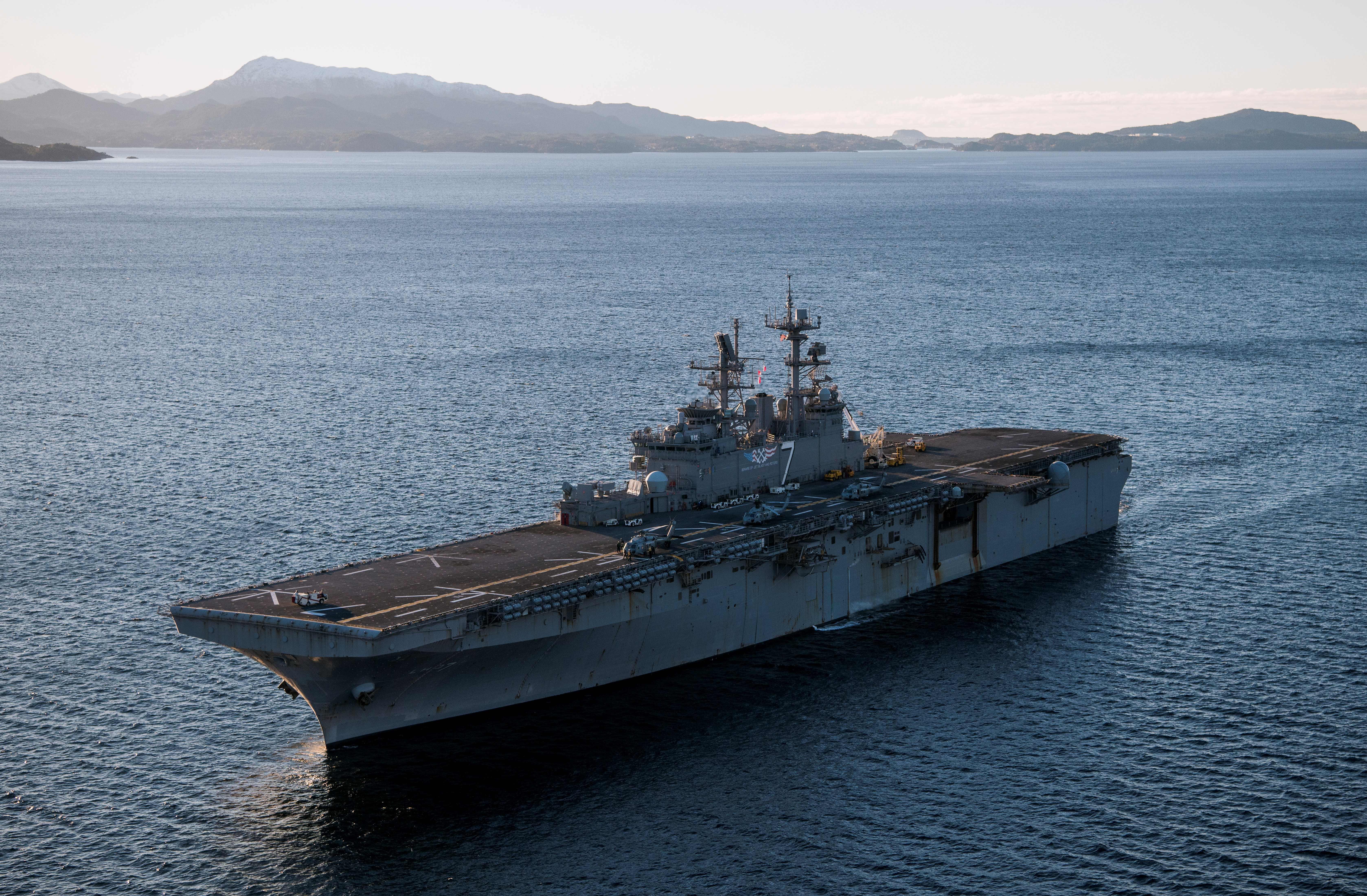
credit should read JONATHAN NACKSTRAND/AFP via Getty Images
- The US military has recently increased its military presence in the Caribbean and Eastern Pacific.
- It comes as the Trump administration says it is targeting suspected drug trafficking efforts.
- Venezuelan officials have denounced the move as an attack on the nation’s sovereignty.
The US has ramped up its military presence in the Caribbean in recent weeks amid what the Trump administration is calling “an armed conflict” with drug cartels and growing escalations with Venezuela‘s military.
US warships and aircraft have been sent to international waters near Venezuela as part of the deployment, the most significant in the region in recent history.
There has been a series of deadly strikes on vessels off the coast of Venezuela, which, according to President Donald Trump and Defense Secretary Pete Hegseth, were trafficking drugs to the US.
The administration has not provided evidence to lawmakers that the boats were carrying drugs, and lawmakers and Venezuelan officials have questioned the attacks’ legal justification.
In September, Venezuelan president Nicolás Maduro — who faces charges of narcoterrorism in the US, which he has denied — called the US military buildup “an extravagant, immoral, and bloody threat.” The country has also begun mobilizing troops and enlisting militia members.
On Wednesday, Republican senators blocked a resolution that would have required the president to seek congressional approval for future strikes in the region.
“Every American should be alarmed that their president has decided he can wage secret wars against anyone he calls an enemy,” said Rhode Island Democratic Sen. Jack Reed, an Army veteran who retired as a major, and member of the Senate Armed Services Committee, the Associated Press reported.
Col. Chris Devine, a senior spokesman for the Department of Defense, told Business Insider in a statement that the deployed warships are part of an effort to support the president’s “directive to dismantle Transnational Criminal Organizations (TCOs), Foreign Terrorist Organizations (FTOs), and counter narco-terrorism to defend the homeland.”
From destroyers packed with missiles to ships carrying Marines and aircraft, see 10 US Navy ships that have been deployed in the region.
USS Jason Dunham
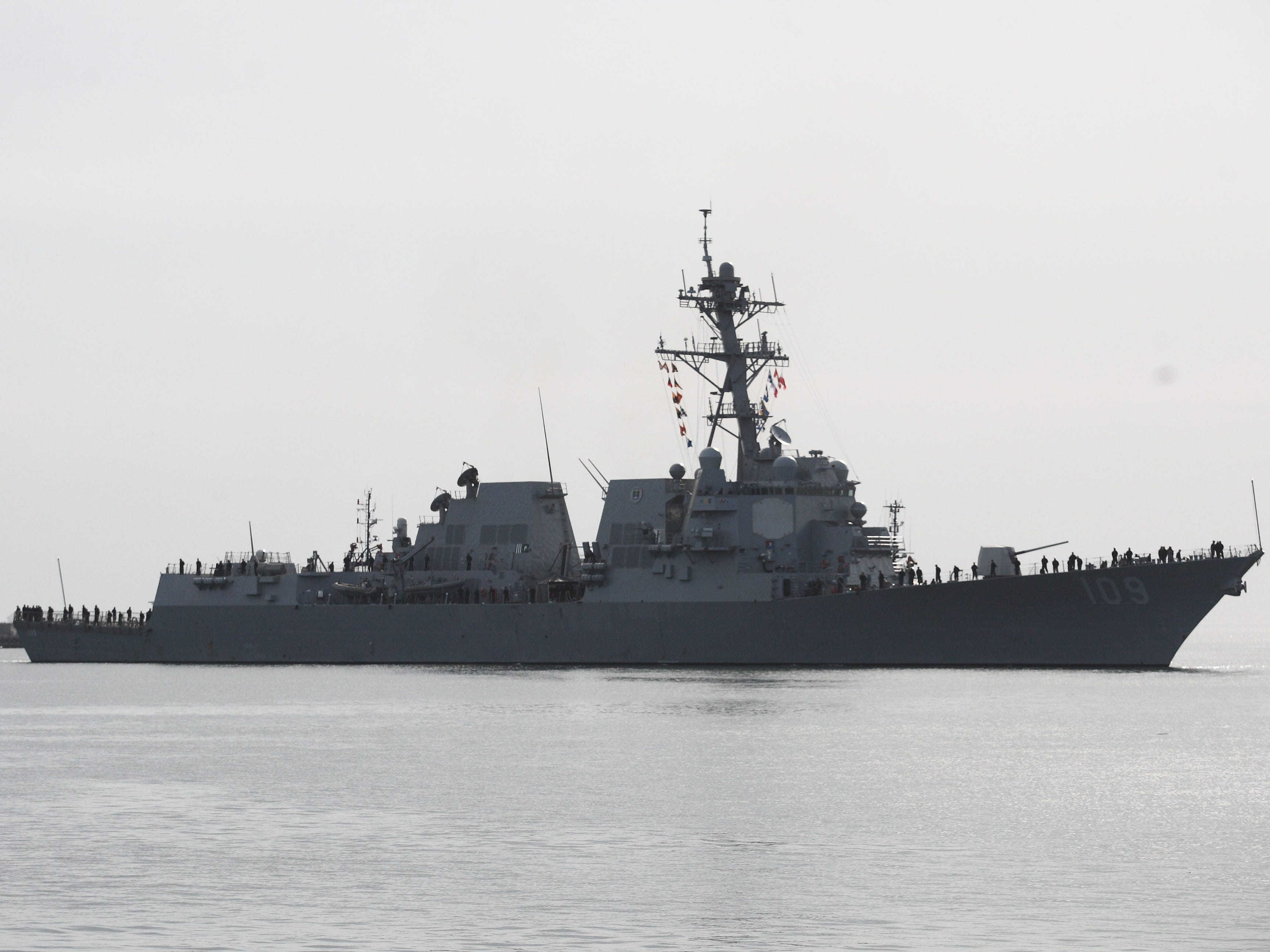
NurPhoto/NurPhoto via Getty Images
USS Jason Dunham (DDG-109), an Arleigh Burke-class guided-missile destroyer, was in the region as of October 7, a Navy official confirmed to Business Insider.
The 510-foot-long, 9,500-ton destroyer was named after Cpl. Jason Dunham, a 22-year-old Marine who was posthumously awarded the Medal of Honor for his selfless actions in a 2004 attack in Iraq. It was built by Bath Iron Works in Bath, Maine, and was launched in 2009.
The vessel is equipped with a 5-inch/62 caliber naval gun, missile cells able to carry anti-ship and air-defense missiles, torpedo tubes, close-in weapons systems, and other defenses. The vessel can carry a deployed helicopter.
After a nearly nine-month-long deployment to the Red Sea and the Mediterranean, the ship returned to its home port of Mayport, Florida, on June 8.
On August 27, The Washington Post reported that the destroyer was in the Eastern Caribbean.
A week later, two Venezuelan F-16 fighter jets conducted a flyover of the ship as a “show of force” as tensions in the region grew.
USS Gravely
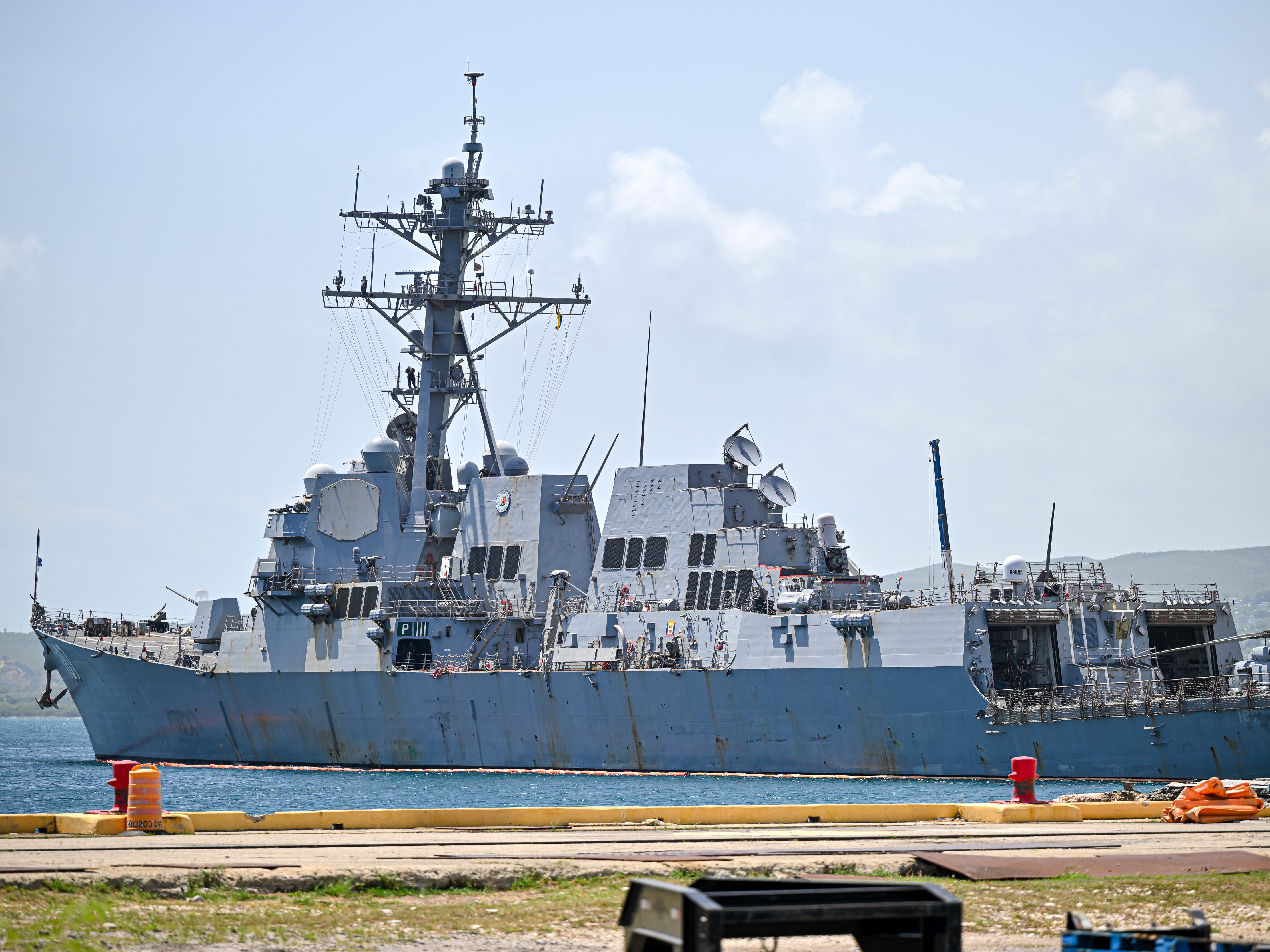
Miguel J. Rodriguez Carrillo/Getty Images
USS Gravely (DDG-107), another Arleigh Burke-class guided-missile destroyer built at the Ingalls Shipbuilding shipyard in Mississippi, was also operating in the area as of October 7, a Navy official confirmed.
On March 15, it was deployed to the Pacific coasts near the US southern border and areas of the Caribbean, US Northern Command said. The action followed Trump’s declaration of a national emergency on the US-Mexico border.
The deployment of the Gravely — which previously spent nine months in active combat during the armed conflict with the Houthis in the Red Sea — to the border was unusual, as the region is typically secured by US border authorities and Coast Guard missions.
On August 27, The Washington Post reported that the destroyer was operating in the Eastern Caribbean.
USS Iwo Jima
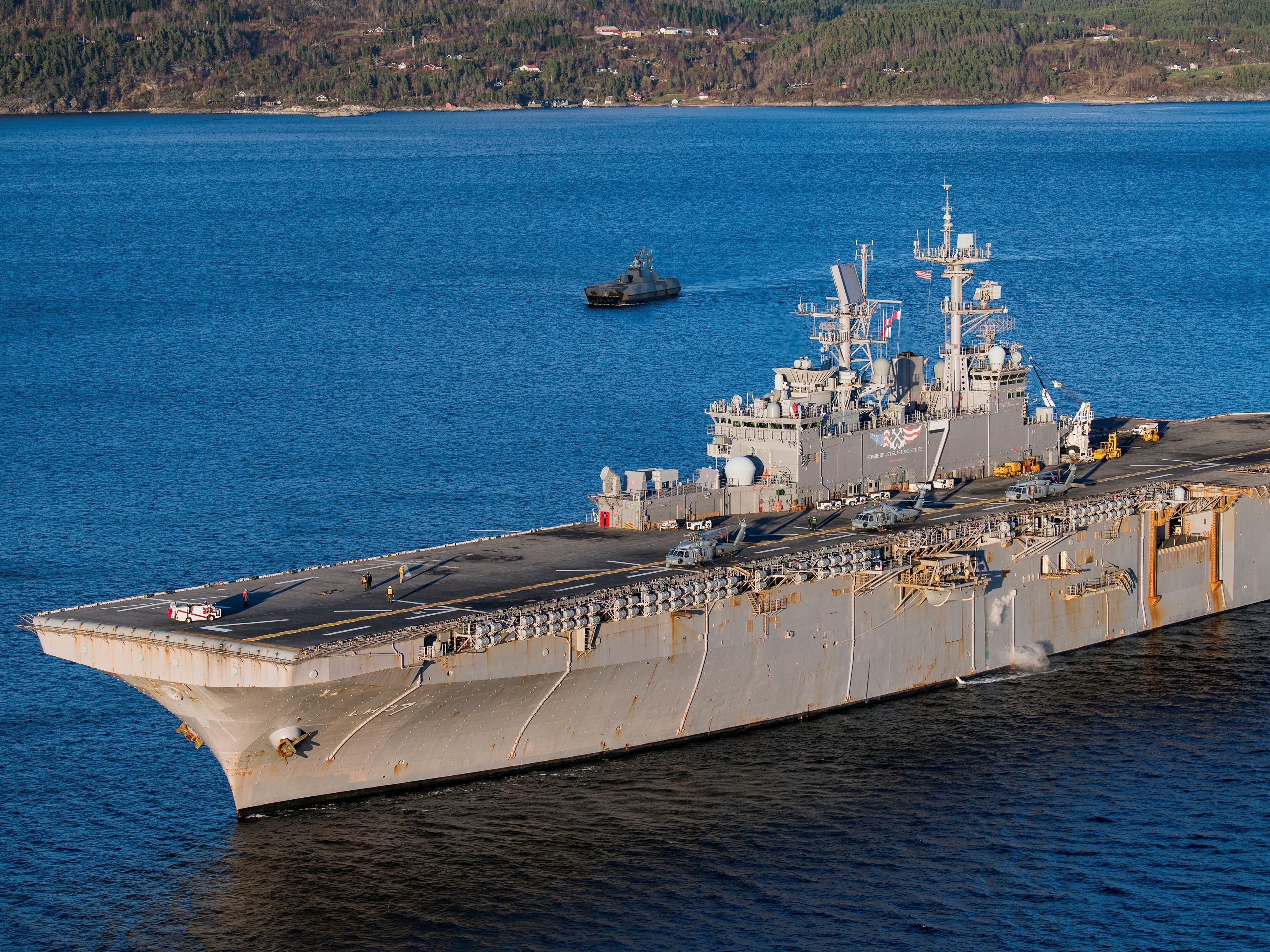
JONATHAN NACKSTRAND/AFP via Getty Images
USS Iwo Jima (LHD-7), an Ingalls-built Wasp-class amphibious assault vessel and helicopter landing deck that serves as the flagship of the Iwo Jima Amphibious Ready Group, was also operating in the region as of October 7.
The USS Iwo Jima amphibious ready group is composed of two support transport dock ships, the USS San Antonio and USS Fort Lauderdale. Together, they can house up to 4,500 sailors and Marines.
On August 27, The Washington Post reported that the Iwo Jima ARG had departed its home port of Norfolk, Virginia, and was en route to the Caribbean.
On September 29, photos released by the Navy showed the ship carrying the MV-22B Osprey tiltrotor transport craft and AV-8B Harrier II fighters as it traveled.
Local US Virgin Islands outlet The Virgin Island Daily News reported over the weekend that the ship had been spotted in St. Thomas.
USS San Antonio
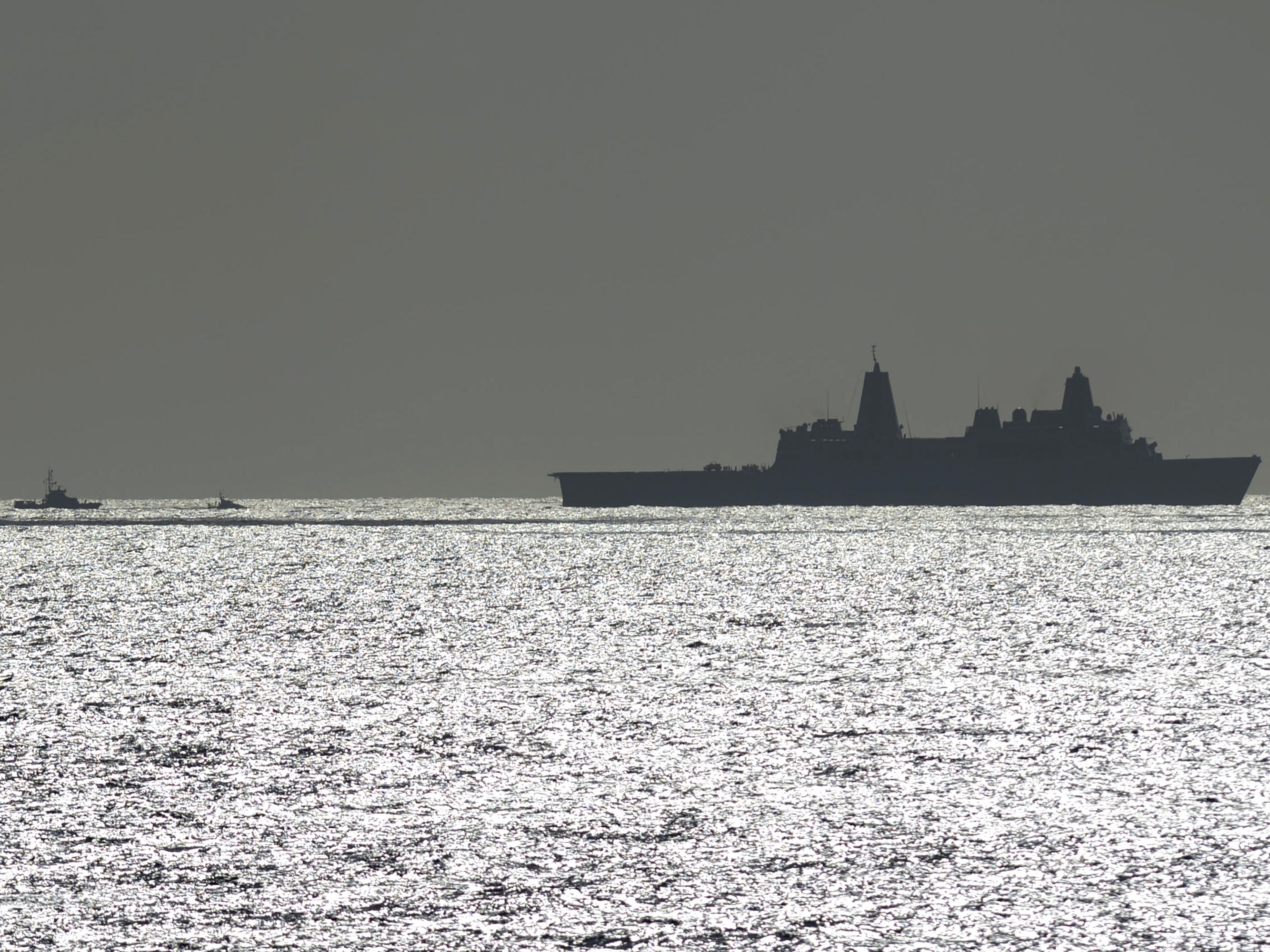
AFP/AFP via Getty Images
USS San Antonio (LPD-17) is the lead ship of its class and an amphibious transport dock built by what was then Northrop Grumman Ship Systems at the Ingalls yard. It has been in service since 2006, most recently traveling with USS Iwo Jima as part of an amphibious ready group.
The ship can house over 300 sailors and 600 enlisted troops and is designed with certain stealthy features.
A Navy official confirmed to Business Insider that the ship was operating in the Caribbean as of October 7.
USS Fort Lauderdale
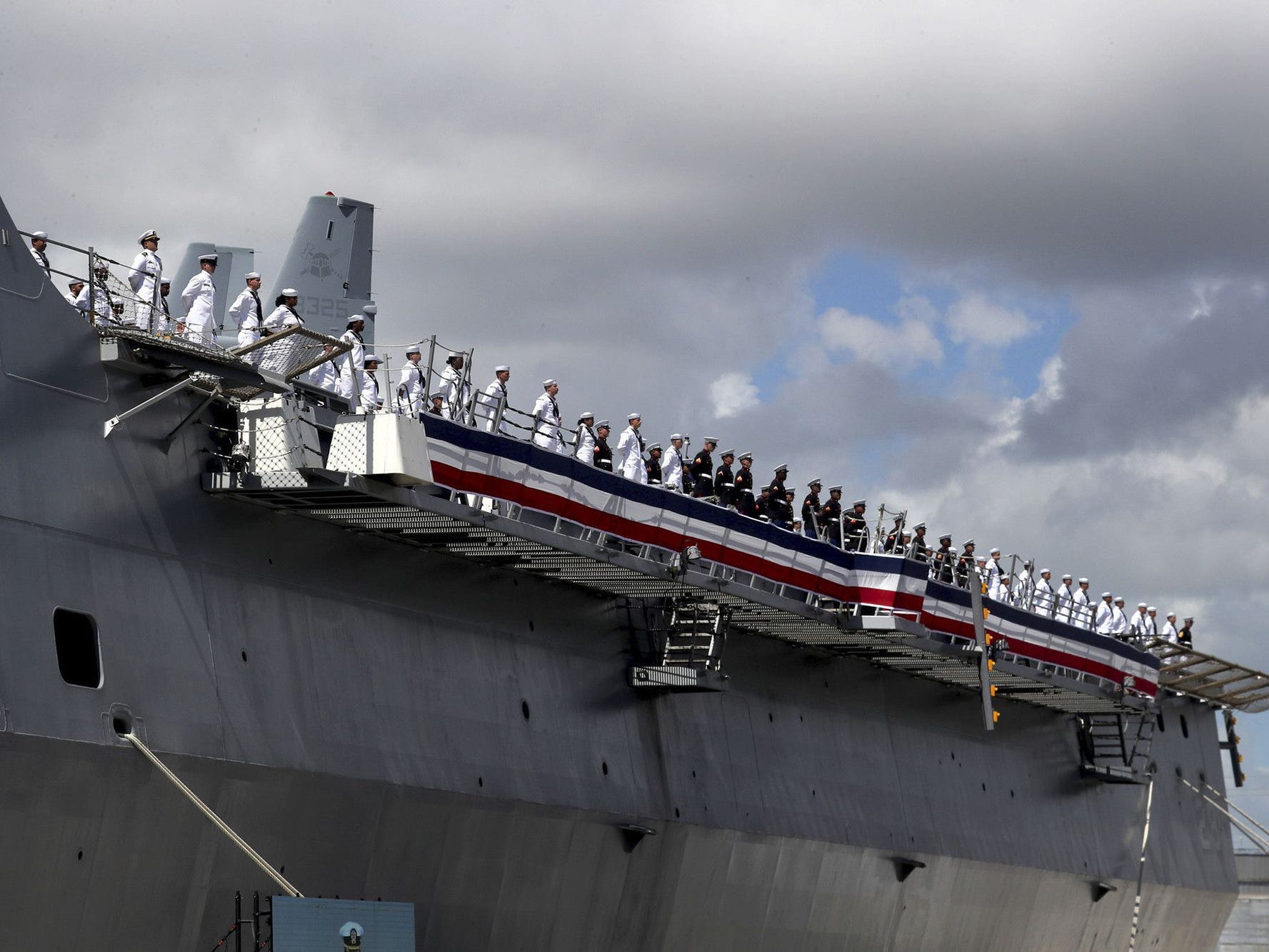
Sun Sentinel/TNS
The second of two transport docks traveling as part of the Iwo Jima Amphibious Ready Group, the USS Fort Lauderdale (LPD-28) is an Ingalls-built San Antonio-class amphibious transport dock ship with capabilities in aiding troop landing operations, among others.
Like the USS San Antonio, the USS Fort Lauderdale can launch hovercraft to assist amphibious operations.
A Navy official confirmed it was operating in the Caribbean as of October 7.
USS Minneapolis-St. Paul
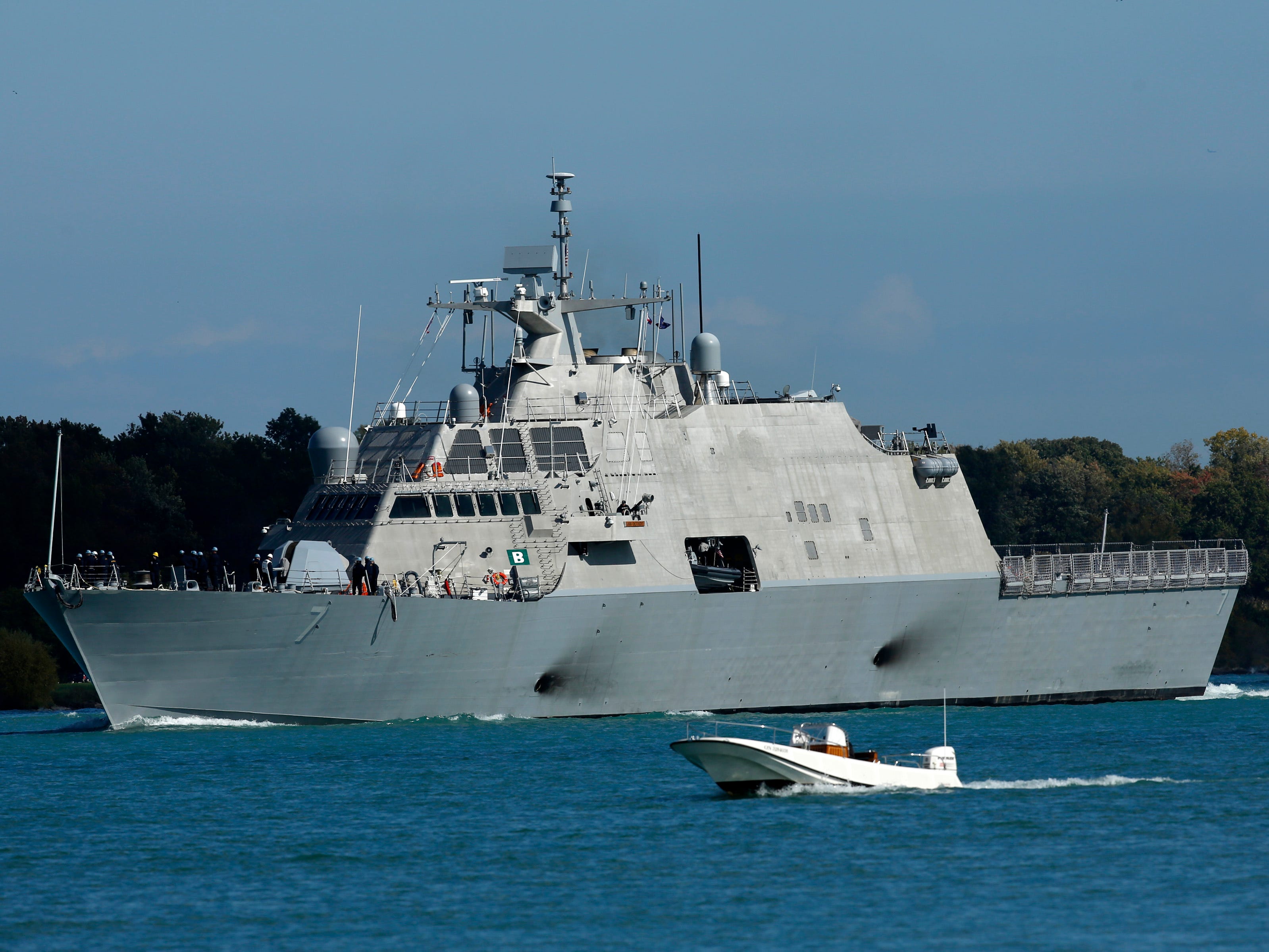
JEFF KOWALSKY/AFP via Getty Images
Another ship confirmed to be in the region as of October 7 was the USS Minneapolis-St. Paul, a Freedom-class littoral combat ship designed by Lockheed Martin and built at the Fincantieri Marinette Marine shipyard in Wisconsin.
In March, the US Navy announced the ship’s first-ever deployment as it traveled from its home port of Mayport, Florida, to the Caribbean to support US 4th Fleet operations.
It traveled with the “Valkyries” of Helicopter Maritime Strike Squadron 50 (HSM-50) Detachment 3, as well as a MH-60R Seahawk helicopter, which would serve as “the ship’s eyes in the sky,” per the Navy’s announcement. The accompanying helicopter’s capabilities include anti-submarine warfare, surface warfare, and others.
By May 13, US Southern Command had announced the ship’s “third successful interdiction” in operations targeting suspected drug smuggling in the Caribbean Sea.
“The USS Minneapolis-Saint Paul is delivering decisive blows against transnational criminal organizations,” Rear Adm. Carlos Sardiello, commander of US Naval Forces Southern Command/US 4th Fleet, said in the announcement. “These interdictions send a clear message: We are vigilant, and illicit trafficking will be interdicted to protect our homeland as well as our regional partners from this threat.”
USS Lake Erie

Mauricio VALENZUELA / AFP
USS Lake Erie (CG-70), a Ticonderoga-class guided missile cruiser built by Bath Iron Works, returned to San Diego from a deployment in the Indo-Pacific region in January.
During its deployment, the ship sailed over 40,000 nautical miles and worked with the embarked Helicopter Maritime Strike Squadron 35 (HSM-35) Detachment 1 in operations “promoting regional stability and security, and protecting free flow of commerce” in the region, US Pacific Fleet said.
On August 27, The Washington Post reported the cruiser was in the Pacific off the coast of Mexico, and by August 30, the ship had crossed the Panama Canal, entering the Caribbean.
A Navy official confirmed to Business Insider that the ship was operating in the region as of October 7.
USS Sampson
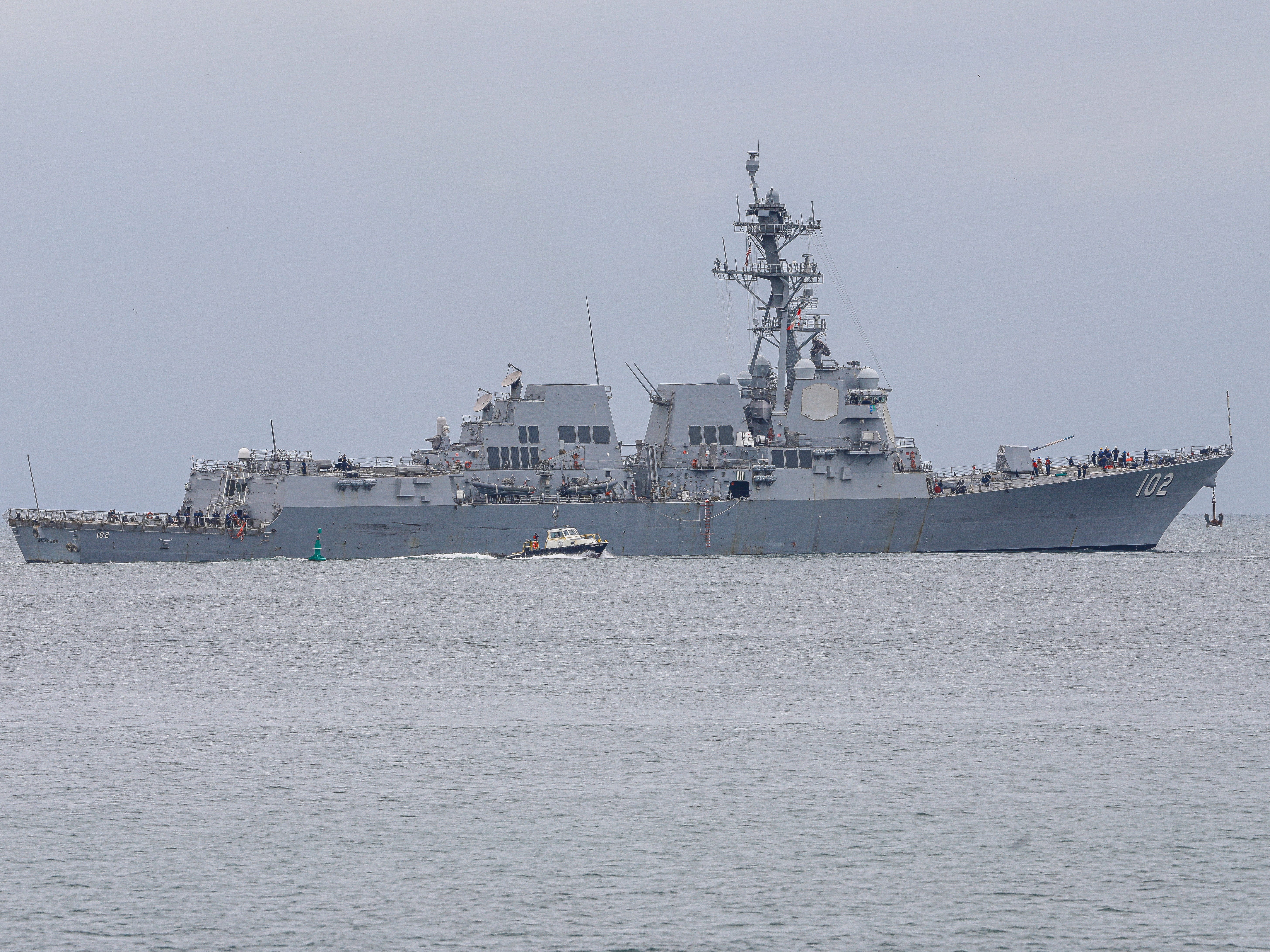
Anadolu/Anadolu via Getty Images
On June 3, USS Sampson (DDG-102) was deployed to the US Northern Command area of responsibility as part of the Department of Defense’s increased presence along the Southern border, US Fleet Forces Command said.
By June 26, the Arleigh Burke-class (Flight IIA) guided missile destroyer had intercepted a suspected drug trafficking operation in the Eastern Pacific along with the US Coast Guard, US NORTHCOM said.
On August 27, the Washington Post reported that the destroyer was in the Pacific off the coast of Panama.
A Navy official told Business Insider that the ship had since left the Caribbean and been replaced by USS Stockdale.
USS Stockdale
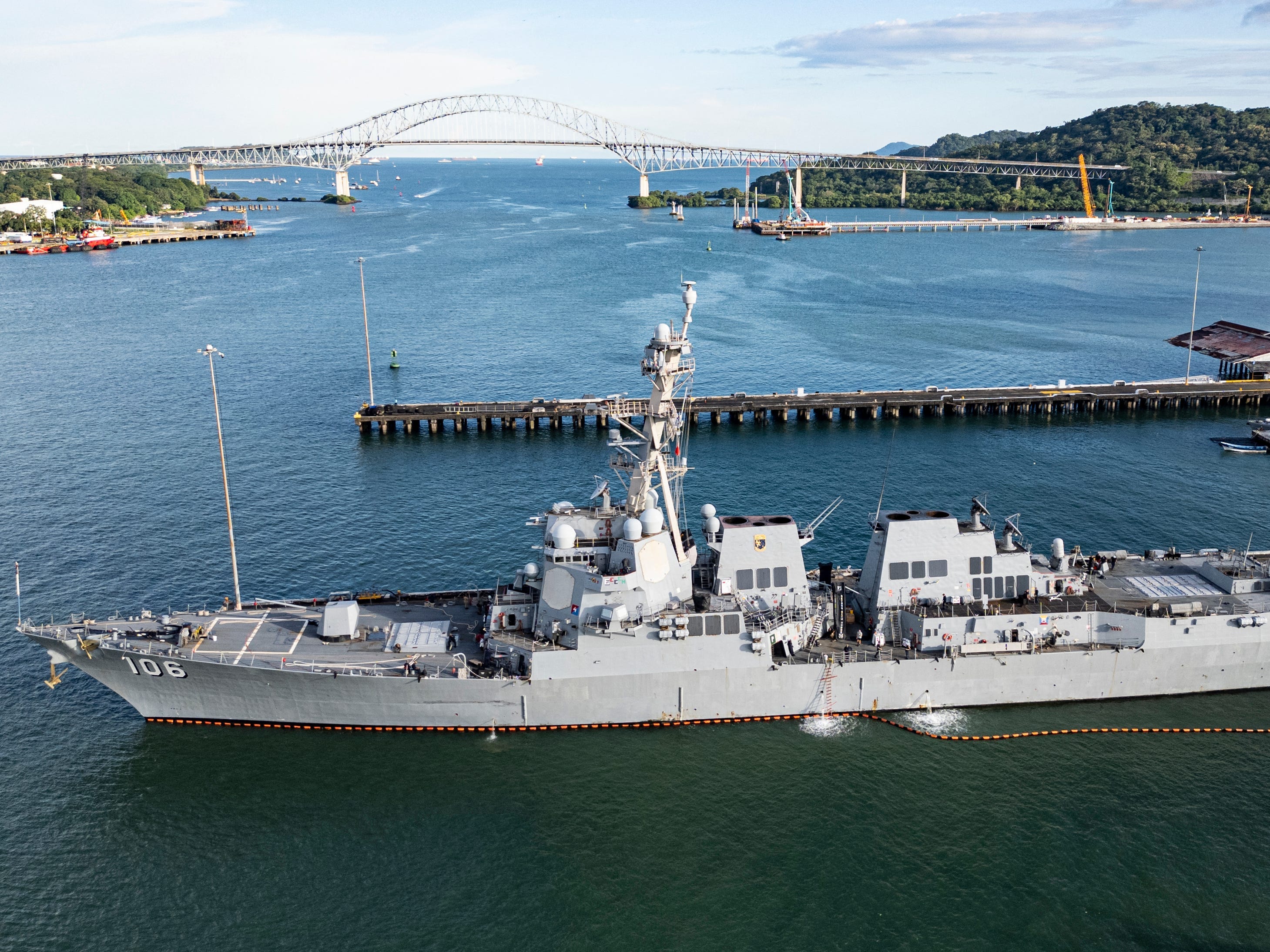
MARTIN BERNETTI / AFP
USS Stockdale (DDG-106), an Arleigh Burke-class guided missile destroyer, was deployed to the US Northern Command area of responsibility on April 11, US Pacific Fleet’s Naval Surface Forces said.
The ship has been described by some outlets as the most battle-tested postwar naval vessel, due to its role in the Houthi conflict, which was the largest naval conflict faced by the US since World War II.
It “successfully repelled multiple Iranian-backed Houthi attacks” in the Arabian Peninsula near Yemen in its previous deployment, Naval Surface Forces said. It returned to its home port of San Diego in February.
During the ship’s current deployment, it “will respond to national priorities and a Presidential declaration emphasizing the military’s role in securing US borders,” per the announcement.
In September, USNI News reported that the destroyer was operating in the Eastern Pacific off the coast of Central America, and by September 23, the vessel had traveled across the Panama Canal and was operating in the Caribbean.
A Navy official confirmed to Business Insider that the ship was operating in the region as of October 7.
MV Ocean Trader
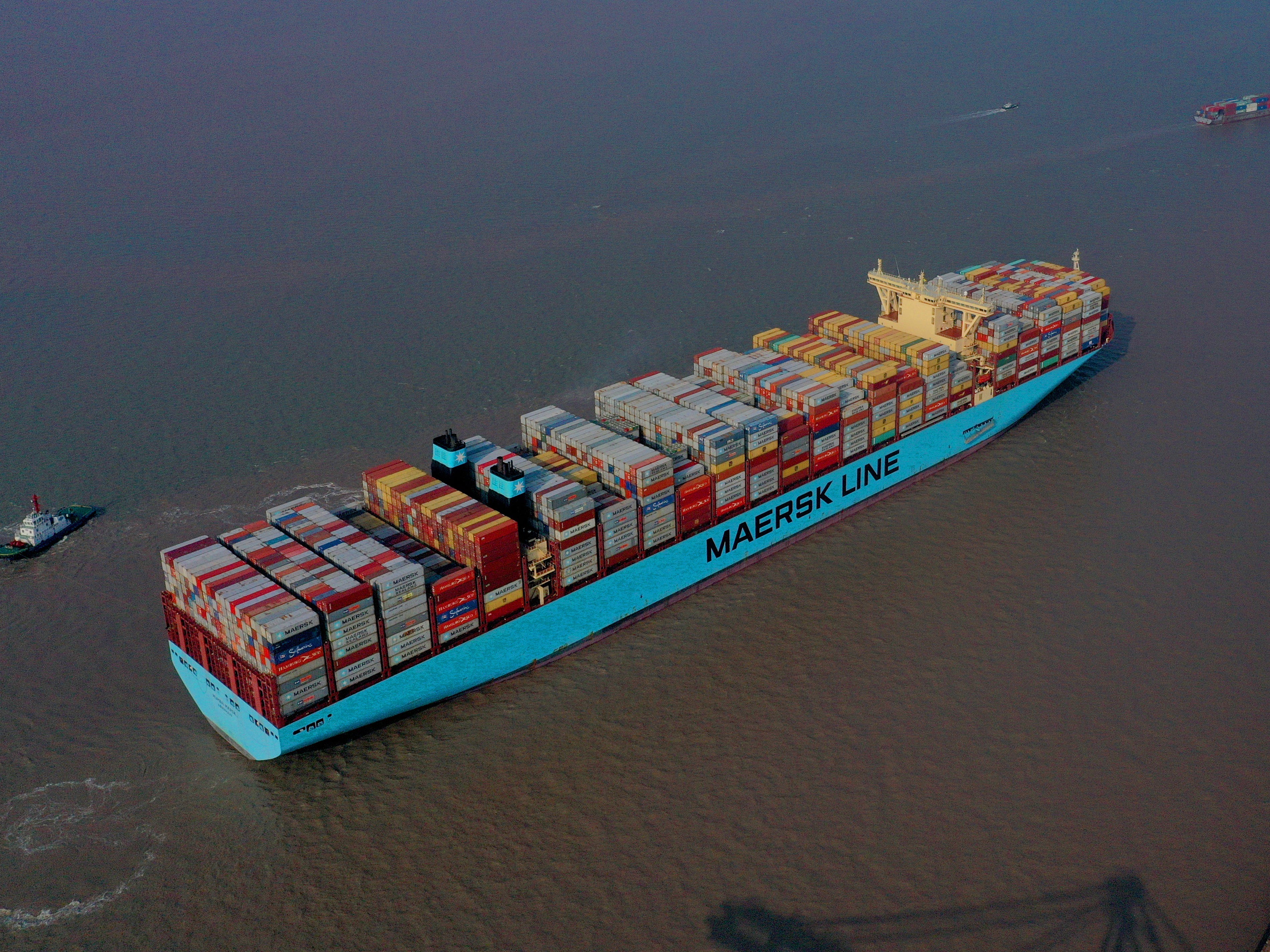
VCG/VCG via Getty Images
Often called a “ghost ship” due to its lack of naval markings or public tracking, the MV Ocean Trader is designed to go unnoticed while supporting covert operations.
The ship provides barracks and a command center for special operations forces, as well as a helicopter base. It’s described as a Special Warfare Support vessel.
On September 25, Task & Purpose reported that the ship, which resembles a commercial cargo vessel, was operating in the Caribbean.
A Navy official did not comment on the MV Ocean Trader’s operation.
Read the original article on Business Insider
The post All the ships the US military has deployed to the Caribbean amid tensions with Venezuela appeared first on Business Insider.




